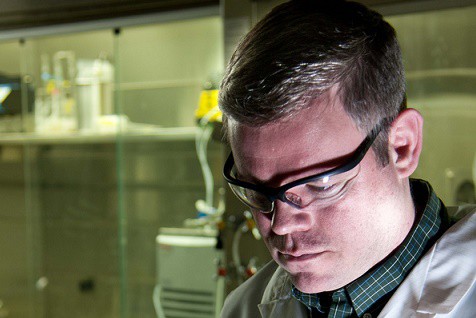Despite preventative measures such as wearing goggles, workers in the manufacturing industry remain at a high-risk of eye injury. In 2008, it was reported that over 500 individuals were admitted into hospitals for eye trauma. A sizeable percentage of these statistics consisted of employees from the manufacturing industry.
When a foreign object, which could be either a small physical particle or a corrosive chemical, comes in contact with the delicate and sensitive parts of your eye, it will result in injury. Some of the injuries which can be caused to the eye are:
- scratches and abrasions on the eyes surface (cornea) from foreign objects like dust or sand,
- penetration of foreign objects like metal scraping into the eyes,
- burns caused by exposure to caustic chemicals, or
- swelling caused by being struck on the eye by a fast moving object.
All eye injuries need to be treated as potential emergencies. Always get in touch with your doctor first!
However, there are injuries where the damage can can be alleviated, if not totally prevented, by immediately flushing the eyes with fluid – ideally within 10-15 seconds of exposure, then followed by appropriate medical attention. This is why eyewash stations are a safety precaution that should never be overlooked.
A well designed, easily installed, regularly maintained eyewash station, like that from Alsco, become an absolute necessity not just for workplaces, but for schools, laboratories and kitchens too. So, if you are the owner of any such place, call Alsco for any assistance you need.
Flushing Period
Flushing times differ depending on the kind of chemical or foreign object the eyes are subjected to. Exposure to mild irritants require 5 minutes of flushing, while, at least 20 minutes is needed for moderately strong irritants and non-penetrating corrosives, and an hour for penetrating corrosives.
Non-penetrating corrosives include most acids and the reason why they need a shorter flushing time is because they form a protective barrier when they become in contact with human tissue. On the other hand, penetrating corrosives like alkalies, hydrofluoric acid and phenol do not do this and enter the eyes quickly, thus requiring a longer flushing time.
Your doctor or your trained first aider should be able to advise you on the amount of time you need to flush your eyes for.
The Ideal Equipment
Not all flushing equipments are suitable for the eyes. For instance, emergency showers or deluge showers are designed for flushing the head and the body, and have high water volumes and pressures which can be damaging to the eyes.
A proper eyewash station should be dedicated for the purpose of washing the eyes only though it can be extended to the entire face. Moreover, it should be accessible and could be reached in as a little as ten seconds.
As for the flushing fluid itself, these stations should expel only tepid water with temperatures ranging between 60°F to 100°F, so it will be comfortable enough for the users to use throughout the required flushing period, and to prevent adverse reaction with the chemicals.
While plumbed eyewash stations are the best choice as they can provide running water continuously, they are not always possible due to location issues within the workplace. If space is an issue, one can opt for portable models instead. Portable eyewash stations are great for first aid and can be a practical substitute for plumbed equipment when it’s just not possible to have one installed near the hazardous area.
Portable Eyewash Stations
- Time is of the essence when it comes to saving someone’s eyesight. This is why eyewash stations should be accessible easily and instantaneously. Portable eyewash stations are designed with this objective.
- Portable eyewash stations are easy to install and do not require plumbing, allowing companies to set up more of them throughout the work area. Having multiple eyewash stations strategically located in the workplace is actually advantageous as it gives the workers better access to them when an emergency arises.
- Moreover, portable eyewash stations also allow its users to be mobile, making the transport to a medical facility (or a plumbed equipment) faster and easier.
Eyewash Station Buying Guide
Choosing the best eyewash station for your workplace doesn’t have to be complicated. Regulations in most countries are pretty uniform and require that eyewash stations should be:
- situated as close as possible to the hazard,
- accessible within 10 seconds of exposure,
- expel a consistent amount of water for at least 15 minutes,
- in a well-lit area and under a highly-visible signage and
- deliver tepid water (between 60 °F to 100 °F) only. If you are going to install a plumbed equipment, you must ensure that pipes are insulated so that the water does not get too cold.
That said, regulations may vary so it is advisable to check what standards your state has set regarding eyewash stations before purchasing and installing any safety equipment. Friendly and professional Alsco representative can assist you in your WHS compliance requirements.
Always wear safety goggles while working with drills, saws, chemicals and in hazardous situations since prevention is always better than cure. However, accidents do happen! It is best to be prepared with proper safety equipment. Eyewash stations can save precious eyesight.
To install this essential first aid equipment, give a call on 1300 659 892 and a friendly sales representative from Alsco will help you. Remember, you only have one pair of eyes!
Photograph Courtsey: U.S. Army CCDC
Image licensed under the Creative Commons — Attribution 2.0 Generic — CC BY 2.0

